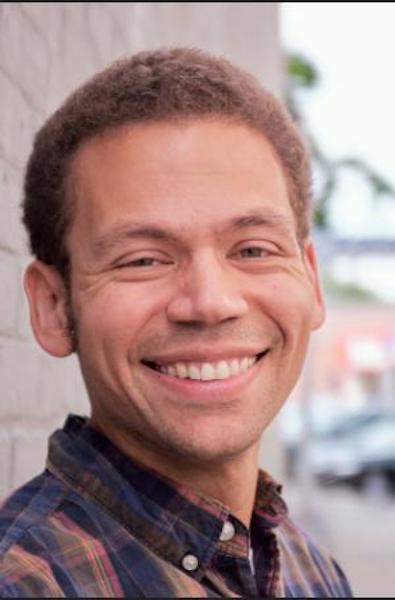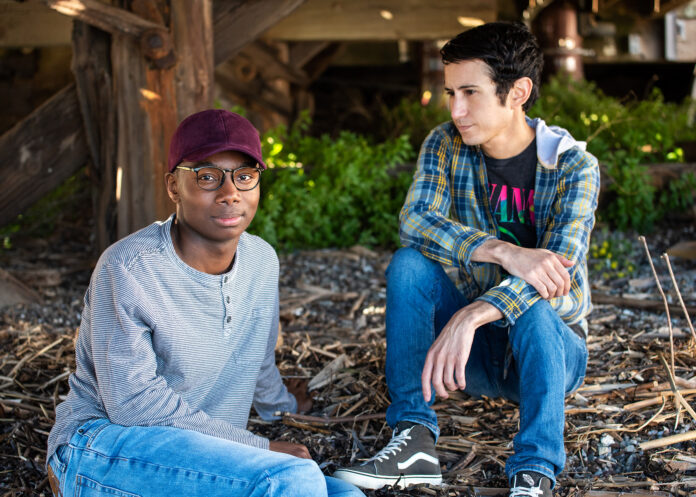
After attending the world-premiere production of “A Picture of Two Boys,” now on stage at the New Conservatory Theatre Center, audience members will have much to discuss.
The play focuses on the reunion of two emotionally scarred men decades after they bonded as teenagers. And among the questions that playwright Nicholas Malakhow leaves humming in one’s mind as his tender, provocative duet comes to a close is whether or not Peter, one of the play’s pair of characters, is gay.
“Some directors who have read the play have asked me about this, too,” explained the New Jersey-born, Colorado-based Malakhow in a recent interview.
But in the context of a work that pits the power of friendship against the lifelong impact of sexual abuse, Malakhow says that the answer to this question, while perhaps not irrelevant, is rendered unknowable by the events recounted in the play.
“What I want to come across loud and clear,” says Malakhow, who worked on the play sporadically over seven years while working as a middle school English teacher, “is that abuse robbed Pete of an opportunity to fully understand himself. It interfered with the process of growing into himself as a person.”
The audience’s question is shared by the character himself. Its unanswerability is at the heart of Pete’s tragedy.
Identity politics have held center stage in many Bay Area theater productions over the years, increasingly so in the wake of the Black Lives Matter movement, the rise in anti-Asian American discrimination and violence and ongoing xenophobia toward Latino immigrants.
Refreshingly, in “A Picture of Two Boys,” Malakhow has largely left such topical matters in the wings. While Pete is Latino and Marcus, the second boy of the title, is black, their individual racial backgrounds are not as important to their characters as the mutual sense of outsiderdom they experience in the largely white small town where they grow up.
Malakhow, who is half-Dominican and half-Ukrainian, recalls that “where I grew up and even amongst my friend groups, I felt a constant sense of othering” that didn’t quite align with the specific ethnic and racial prejudices frequently explored in social-realist drama.

In his online artist’s statement, Malakhow writes: “I often find myself hesitant to claim a seat at any particular cultural table. Similarly, I find myself struggling to define what it means to be a part of the queer community, as I don’t feel an affinity with, and often feel at odds with stereotypical ‘white gay male culture.'”
When reading gay, black and Latino literature during his own high school and college years (Swarthmore College and the theater education Masters program at Emerson), Malakhow, now 38, says “I always found myself doing empathy acrobatics” in order to connect with the characters’ life experiences.
Ultimately, this led to Malakhow’s desire to write about what he refers to as “universal identity”: common denominators shared both by people who might use identity politics to separate themselves and also those, like the playwright himself, who find themselves perpetually outside of tribal communities.
“The germ of ‘A Picture of Two Boys,'” Malakhow explains, was to explore the relationship of two people who probably might otherwise have never found each other but forged a friendship through their shared outsiderness.
Malakhow is passionate about his work as a teacher and writes alongside his classroom duties. Several of his works in progress, like this show —his professional debut, developed over seven years— reflects the lives of young people who are sometimes unable to effectively articulate the psychological turmoil they are experiencing.
“One of the things I love about playwriting,” he explains, “is that unlike in a novel, where characters’ internal thoughts are often played out in prose, there’s an incongruence between what’s being felt and what’s being said in the dialogue. Partly due to growing up with a sense of otherness, I think of myself as a listener. I try to hear both how people communicate —and fail to communicate— with their words.”
